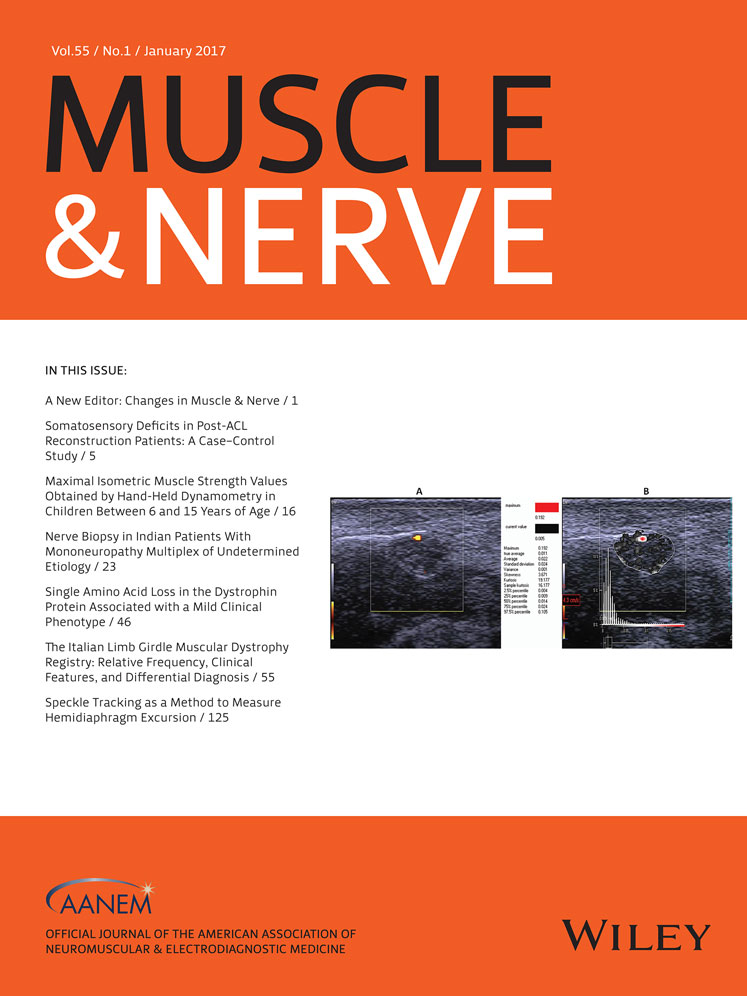Rapsyn congenital myasthenic syndrome worsened by fluoxetine
ABSTRACT
Introduction: Fluoxetine is a selective serotonin reuptake inhibitor and long-lived open channel blocker of the acetylcholine receptor, often used in the treatment of slow-channel congenital myasthenic syndromes (CMS). Methods: We report a 42-year-old woman who had a history of episodic limb weakness that worsened after initiation of fluoxetine for treatment of depression. Genetic testing for CMS revealed a homozygous pathogenic mutation in the rapsyn (RAPSN) gene (p.Asn88Lys). Electrodiagnostic testing was performed before and 1 month after discontinuation of fluoxetine. Results: The 2 Hz repetitive nerve stimulation of the fibular and spinal accessory nerves showed a baseline decrement of 36% and 14%, respectively. One month after discontinuing fluoxetine, the spinal accessory nerve decrement was no longer present, and the decrement in the fibular nerve was improved at 17%. Conclusions: This case demonstrates worsening of both clinical and electrophysiologic findings in a patient with CMS secondary to a RAPSN mutation treated with fluoxetine. Muscle Nerve 55: 131–135, 2017




